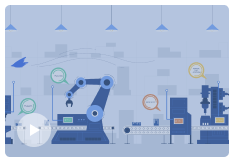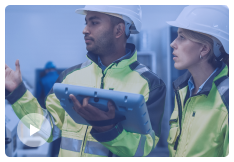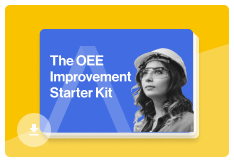Strategies that focus on continuous improvement in manufacturing need to be built from the ground up. The shop floor or frontline-first approach can’t just be about technology. “It can’t be about the capabilities, features or functions of the technology. It has to be about what the people on the shop floor need to do with the technology. It must be about them and their jobs,” notes Forbes.
In this blog, consisting of two parts (see Part 2), we focus on the frontline-first approach to implementing successful continuous improvement practices, including a summary of the recent fireside chat between Martin Cloake, CEO at Raven and Justin Brennan, Director of Operational Excellence at Renaissance Lakewood. Justin Brennan shares his experience using Raven, how Raven helped transform the frontline’s mindset, and key continuous improvement wins Renaissance has celebrated to date with a focus on:
- Engaging the frontline to demonstrate the value of their daily work
- Understanding the root cause of production losses and downtime
- Using two-way, data-led conversations to resolve real-time and systemic issues
Question #1: What is data democratization? And what does it mean to you and your team?
Answer: Data democratization is really a simple concept. In theory, it’s using the data that we collect and share with the people who create and live with it daily, in order for them to get a chance to speak to it, understand it, and really engage with it — versus throwing into what I call the “data black hole”.
There are instances where operators give invaluable feedback and insight that are stalled out in the middle of the feedback loop. So, we’ve put our focus towards resolving the challenges that we’ve had with data democratization. A lot of it for us was around building trust and making sure that we’re able to show our operating team that we care about their insights, we care about what they provided us, as well as what we shared with them. The operating team is able to be part of the continuous improvement process, rather than just an input. Your team shouldn’t feel left behind in the process building.
Question #2: Do you have a shop floor scenario where you’ve built trust with your frontline operators?
Answer: It’s human nature to sometimes resist change to anything new. However, we’ve seen that magical moment where everything comes together. Recently, when an operator had the chance to see the data they contributed to the system, they understood how it was used and it made sense to them.
This is what happened on the shop floor. We had a conversation with operators around the timeline of a specific packaging line and the processes we were trying to improve. Then, we asked our operators how we can help with specific tasks and showed the different ways the engineering team could use the data collected to address their most pressing challenges, using Raven. Their eyes lit up when we showed the operators how we visualized the information that they sent us.
So, not only did the teams come out and actually talk to us and have a conversation about the data Raven was collecting, but they’re listening to what we’re seeing and trying to understand daily pain points. The teams have a little bit of predictability and sense of how our frontline’s day is going to go now. Operators started to pull me aside and show me things on a line that they were dealing with for years. Things they never really had a chance to get fixed because they felt like they weren’t being heard. It’s a constant. You constantly have to engage your frontline, it’s not just a one-off. Through constant engagement and constant discussion, I started to see the team change their approach to sharing critical production information.
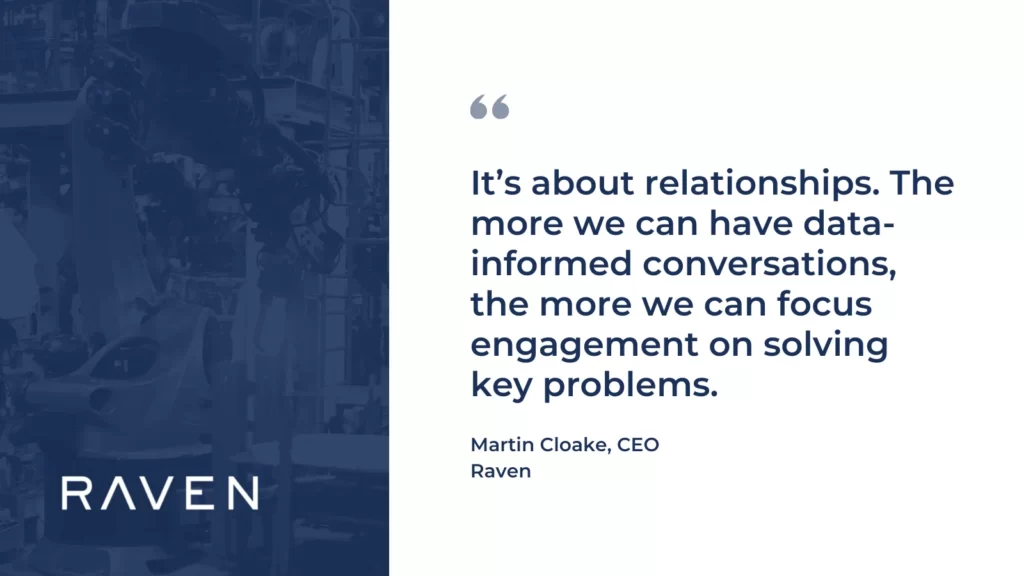
Question #3: In what ways do you see the difference between calculating performance and describing what actually happened on the lines?
Answer: In some ways, organizations think calculating OEE is the same as describing performance. There’s often frustration from operators when they see a global metric like OEE improvement or a QB rating that describes performance. There’s a dynamic between operators and leadership when they look at the timeline of a day together, to describe performance. It removes the disconnect between what management and engineering believes is happening and what the operators know is happening.
There’a point where operators and leadership make a connection and it’s clear they’re all playing off of the same sheet music. For example, when frontline workers who lost 45 minutes are able to show they were waiting for a part to be fixed, they have a grin on their faces when leadership realizes there’s more to it than operator downtime.
Question #4: How does Raven’s data timeline fit in with your particular approach to continuous improvement in manufacturing, as you began to initiate these CI changes?
Answer: We recently did a value-add, non value-add assessment on one of our filling lines. Here’s what happened:
- We pulled data from Raven up on a screen, walked through the data with the operators and pointed out the start time, the brakes, and everything else visualized in the data timeline.
- Our goal was to understand the “why”. So, while reviewing the Raven timeline with our operating team, we were able to understand that we had start time variability.
- We then included everyone in the conversation and asked, “what about the process creates a start-up time of X?” or “what issues do you run into during startup?”.
- Then we followed up by doing a Gemba walk, making observations and having an on-the-floor standup. The data itself provided the platform for discussion because it became less subjective. We talked about what we can do to solve things with a team function and team fashion, by tearing down some of those natural silos.
- We made some changes and then went back to the “how do we build trust” question, and acknowledged that leadership wasn’t setting operators up for success. That was a big part of owning it and building that true partnership, versus treating it as a transactional relationship.
Question #5: What challenges have you faced collecting data via manual processes and how have your processes evolved?
Answer: We implemented our own data collection processes from manual systems to what they are today. First, we asked, what data do we need and what data do we already have?
While walking the lines and talking to the operators, we saw some rudimentary whiteboards and data capture systems — but they often didn’t reflect what was actually happening. Neither was the data collected for historical reference.
Essentially, at the end of the day, the operators thought filling out the whiteboard was a nuisance because it didn’t provide them value.
These are the steps we took towards our digital transformation strategy that eventually brought us to Raven:
- Using whiteboards to keep track of production information
- Digitizing and sharing shift reports in a spreadsheet
- Transitioning into the line base command, line sideboard, and pacing board
- Combining and analyzing data from machines and operators to provide a clear overview of all OEE improvement and production losses — with meaningful context
Implementing Raven was a perfect opportunity for us to measure how we’re performing, to share, and build a culture of continuous improvement by having conversations driven by data.
We primarily worked at understanding how the different moving parts inside our company worked together and what the data could tell us in conjunction with those frontline conversations. Now we can have a two-way open and honest conversation to say, “look, I know this may not feel like it’s gonna work but let’s try it and fail forward together. If it doesn’t work, it’s all of us together, then we’ll make it better and try again.”
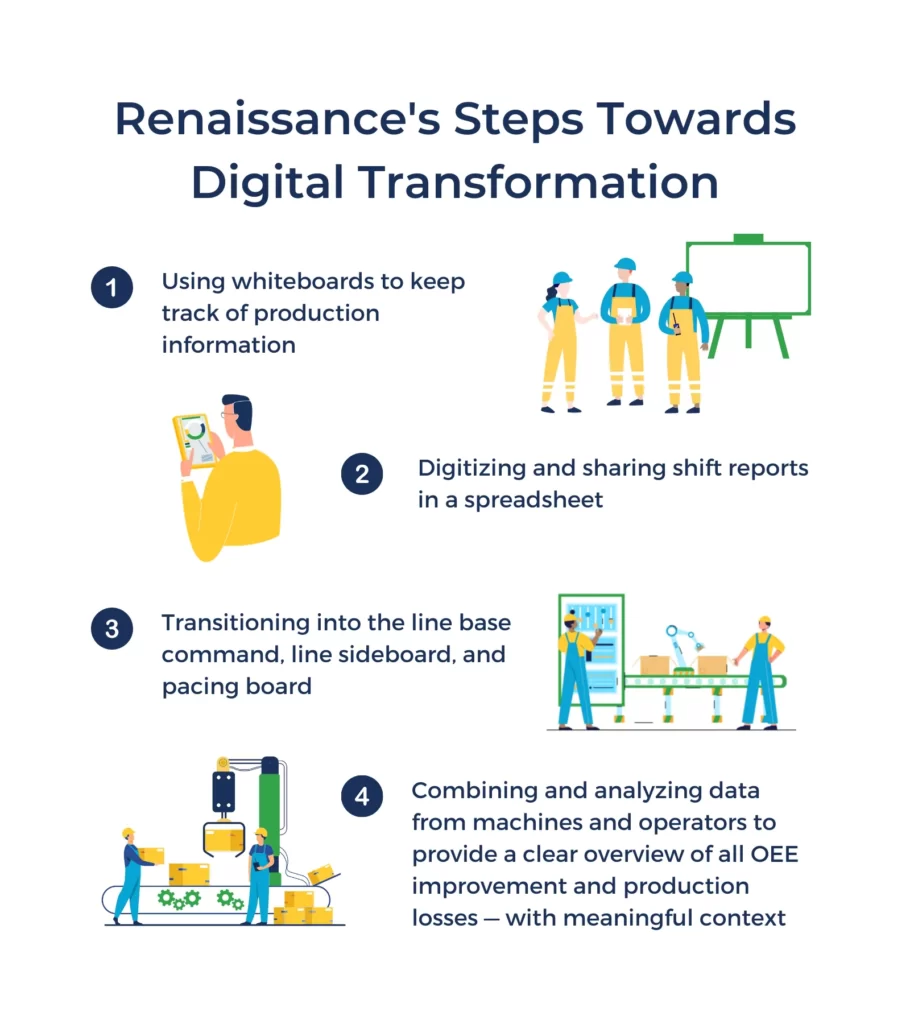
Question #6: How do you get your frontline to embrace continuous improvement processes in order to be engaged to take action?
Answer: We like to think about it as ownership. Our goal is to craft a solution together. We give frontline operators a chance to have their voice heard while using Raven’s downtime tagging and data timeline. By doing so, we are utilizing frontline input in a way that makes sense to them.
Specifically, as we built out our downtime trees and asset hierarchies, we asked, “What do you call this piece of equipment? What do you say, when this happens? What does this mean to you?” We wanted to carry this entire initiative through as part of a continuous improvement culture — with a problem-solving mindset. The continuous improvement in manufacturing initiative also included explaining what the five Y’s are and understanding the eight wastes from a lean manufacturing perspective.
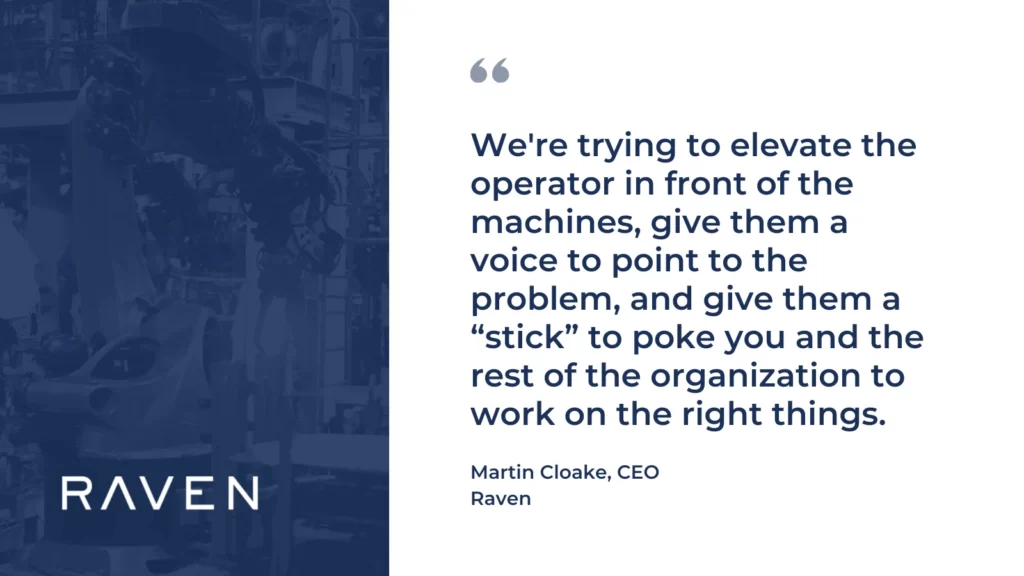
Watch the fireside chat on-demand
Learn why a frontline-first approach is the key to successful continuous improvement and digital transformation initiatives through Renaissance’s CI journey, and how the factory uses technology and two-way data-led discussions to engage the frontline and demonstrate the value of their daily work.
